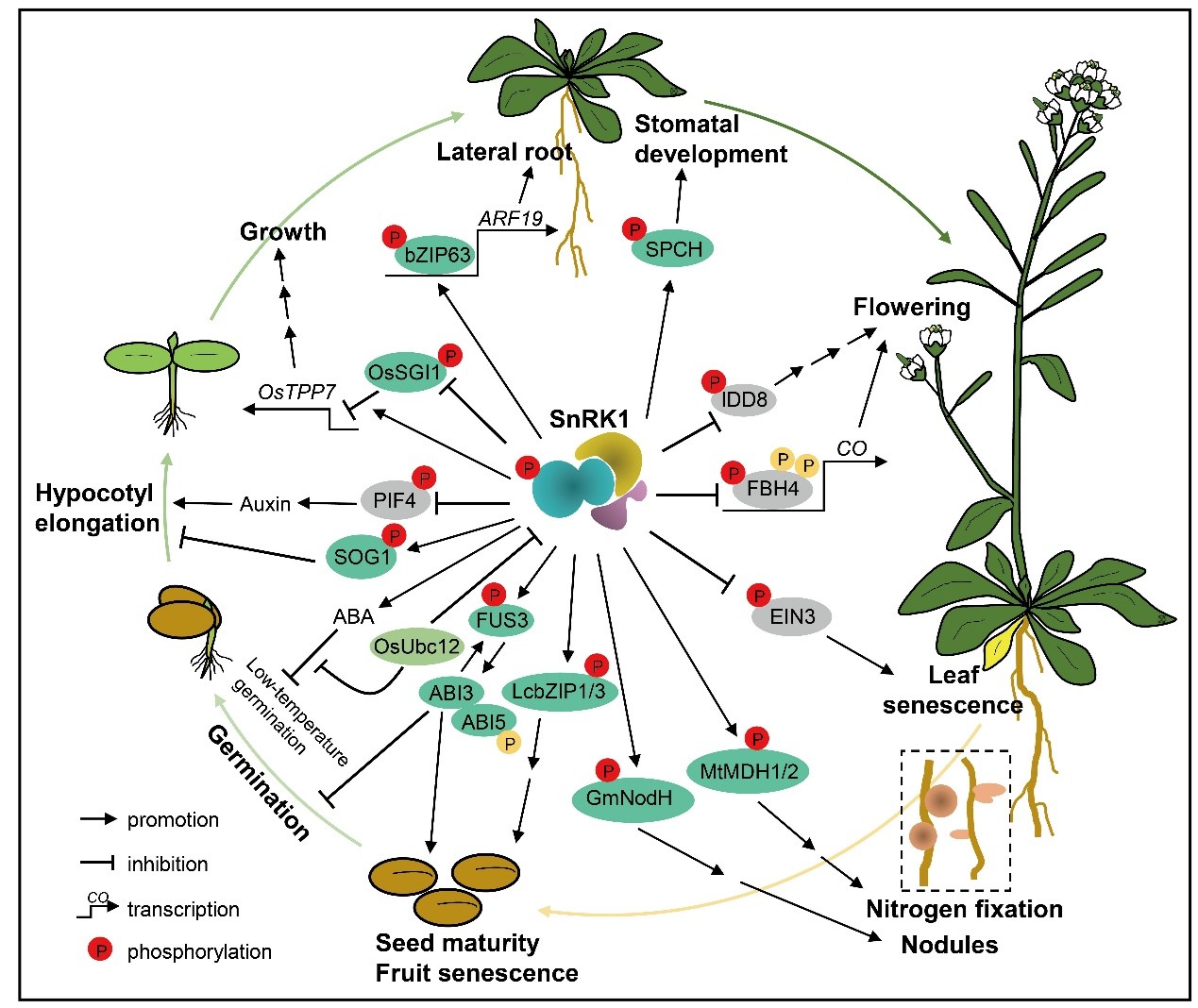A research team led by Prof. YANG Wenqiang from the Institute of Botany of the Chinese Academy of Sciences (CAS), in collaboration with partners, has revealed the molecular network by which SnRK1, as a conserved energy sensor in plants, acts as a core hub integrating energy homeostasis, stress adaptation, and growth regulation.
This review, published in Plant, Cell & Environment, not only clarifies SnRK1's core role as a plant "energy hub" but also provides key theoretical foundations and novel molecular targets for future crop breeding aimed at enhancing stress resistance and yield.
In this study, researchers outlined the structure, post-translational regulation, and diverse functions of SnRK1 in plants. They found that SnRK1 is a heterotrimeric complex composed of α, β, and βγ subunits, with its activity regulated through phosphorylation, ubiquitination, SUMOylation, N-myristoylation, and potentially acetylation.
SnRK1 is expressed in various plant tissues and participates in multiple cellular processes, including sugar signaling, energy homeostasis, and hormone regulation. It modulates plant growth and development—from seed germination to flowering and fruiting—by regulating gene expression, protein stability, and metabolic pathways. Furthermore, SnRK1 plays a crucial role in plant responses to abiotic and biotic stresses, and coordinates growth and stress responses by regulating plant hormone signals.
This study emphasizes that a deeper understanding of SnRK1's regulatory networks—including subunit interaction dynamics, shifts in subcellular localization, and the spatiotemporal specificity of post-translational modifications—can provide new strategies for crop genetic improvement. Researchers propose that using gene-editing technologies or regulating SnRK1-interacting proteins may enable the creation of new crop germplasm with enhanced stress resistance (to drought, salinity, and diseases) and higher energy use efficiency.

Functions of SnRK1 in plant growth and development. (Image by XU Qinzhen)
A research team led by Prof. YANG Wenqiang from the Institute of Botany of the Chinese Academy of Sciences (CAS), in collaboration with partners, has revealed the molecular network by which SnRK1, as a conserved energy sensor in plants, acts as a core hub integrating energy homeostasis, stress adaptation, and growth regulation.
This review, published in Plant, Cell & Environment, not only clarifies SnRK1's core role as a plant "energy hub" but also provides key theoretical foundations and novel molecular targets for future crop breeding aimed at enhancing stress resistance and yield.
In this study, researchers outlined the structure, post-translational regulation, and diverse functions of SnRK1 in plants. They found that SnRK1 is a heterotrimeric complex composed of α, β, and βγ subunits, with its activity regulated through phosphorylation, ubiquitination, SUMOylation, N-myristoylation, and potentially acetylation.
SnRK1 is expressed in various plant tissues and participates in multiple cellular processes, including sugar signaling, energy homeostasis, and hormone regulation. It modulates plant growth and development—from seed germination to flowering and fruiting—by regulating gene expression, protein stability, and metabolic pathways. Furthermore, SnRK1 plays a crucial role in plant responses to abiotic and biotic stresses, and coordinates growth and stress responses by regulating plant hormone signals.
This study emphasizes that a deeper understanding of SnRK1's regulatory networks—including subunit interaction dynamics, shifts in subcellular localization, and the spatiotemporal specificity of post-translational modifications—can provide new strategies for crop genetic improvement. Researchers propose that using gene-editing technologies or regulating SnRK1-interacting proteins may enable the creation of new crop germplasm with enhanced stress resistance (to drought, salinity, and diseases) and higher energy use efficiency.

Functions of SnRK1 in plant growth and development. (Image by XU Qinzhen)
